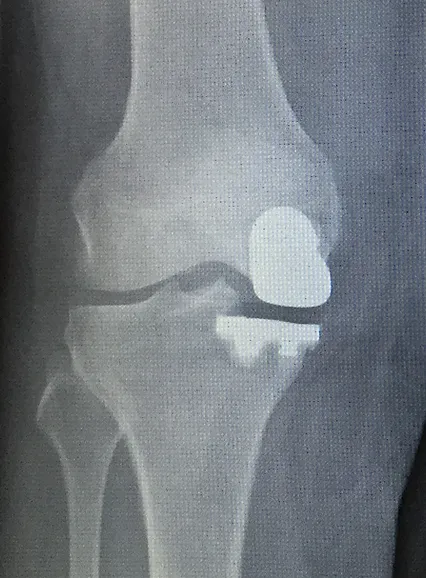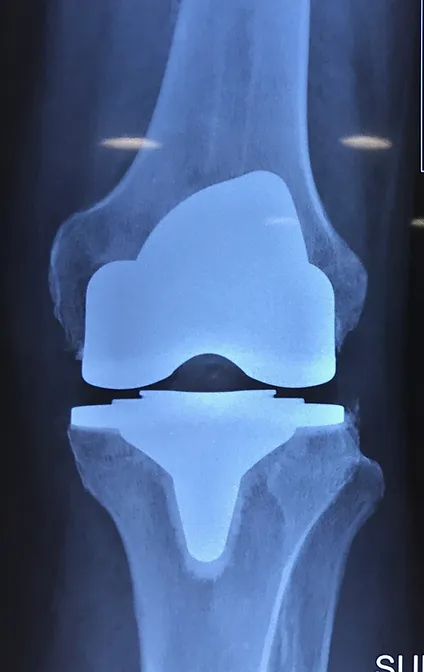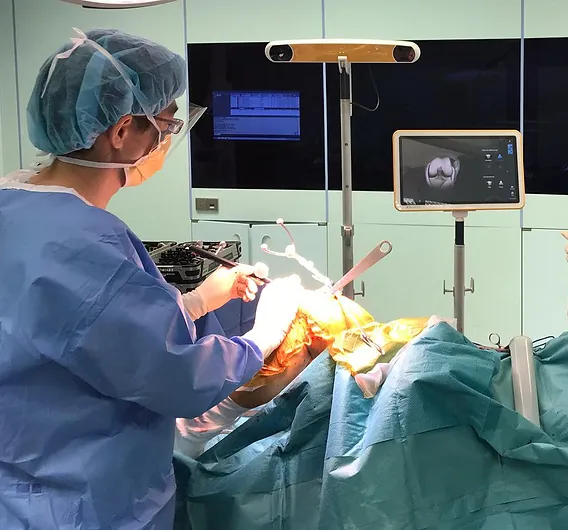Knee Replacement Surgery

Knee Replacement Surgery and Post-op Arrangements
A Knee Replacement surgery is a surgery to treat significant persistent pain due to Knee Osteoarthritis. It is a highly successful surgery with satisfaction rates of about 95 to 98%.
A knee replacement may be a Total Knee Replacement, or a Partial Knee Replacement, depending on the severity of the condition.
How long does a Knee Replacement last?
Statistics show that modern Knee Replacement implants last 20 years in 85% to 90% of cases. The vast majority of patients will have to undergo this surgery only once in their lifetime.
Knee Replacement Implants
The femur component (top) is Cobalt Chrome, the tibia component (bottom) is Titanium or Cobalt Chrome, and the in-between layer is Polyethylene.
Can I squat after Knee Replacement?
Even though some patients do discover that they can squat after surgery, we will advise you not to squat, as squatting puts highly increased pressures on the implant, increasing the risk of implant loosening.
Before Knee Replacement surgery
You will undergo blood tests, a Chest Xray, and a heart Electrocardiogram to make sure you are fit for surgery. These tests will be done within one month before surgery, and are done at our clinic/hospital.
We will also instruct you on the medications that you should or should not continue before your surgery.
Surgery
On the day of surgery, you will admit to the designated hospital at least 2 hours before the surgery time. The actual surgery takes about 1.5 to 2 hours, but patients will be in the Operating Theatre for 3 to 4 hours. This is due to the pre-op preparation and post-op monitoring.
On the day after surgery, physiotherapy can start and the patient can start ambulating with a Walking Frame. Physiotherapy will continue daily while the patient is in hospital.
For Total Knee Replacement, most patients stay about 3 to 4 days in hospital. For Partial Knee Replacement, most patients stay 2 to 3 days.
Knee Replacement Recovery
On discharge, the hospital will supply the Walking Frame. Most patients use the walking frame for the first 2 to 4 weeks and then switch to a walking stick or quad stick thereafter. Patients may use the stick for up to 1.5 months after surgery. Full recovery is about 3 to 6 months.
Time away from work is variable and depends on each patient’s work requirement. In our experience, it may range from 3 weeks to 3 months.
After surgery, the knee will have a bandage on it, and we will supply you a waterproofing cover. For the first 2 weeks, it is best to shower seated. Also, it is best to have a caretaker for the first 2 weeks after surgery. If you have stairs at home, you should minimise going up and down the stairs, and have someone to assist you while you are on the stairs.
For patients with no available caretaker, one option is for the patient to discharge to a step-down care facility, ie a nursing/rehabilitative centre. Patients may stay there for about 2 to 3 weeks followed by discharge to home.
Follow-up Appointments will generally follow this time-line:
First appointment 2 weeks after surgery, then
One month later, then
1.5 months later, then
3 months later.
Subsequent follow-ups will depend on each patient’s condition.

Partial Knee Replacement

Total Knee Replacement

Dr Ang using computer navigation to ensure very accurate implant positioning

Walking Frame


